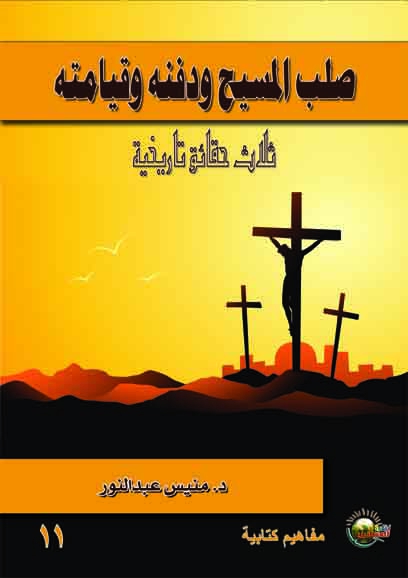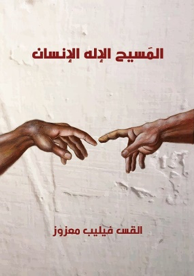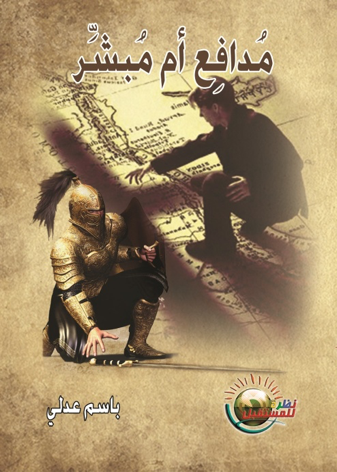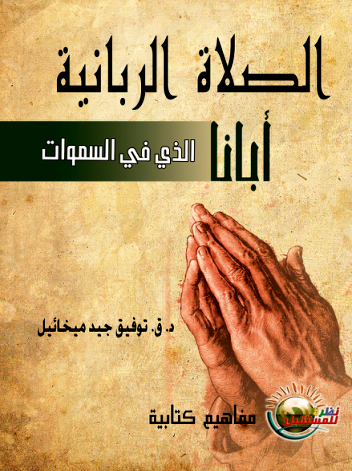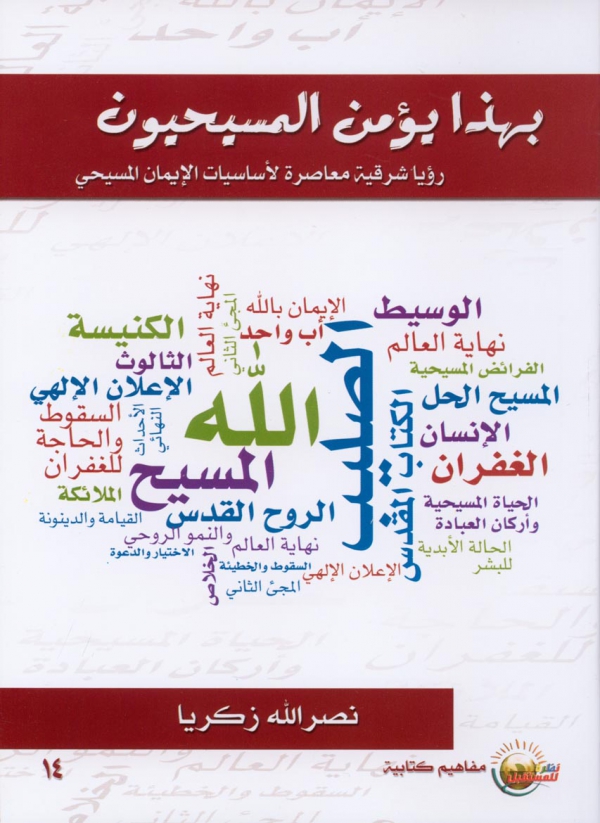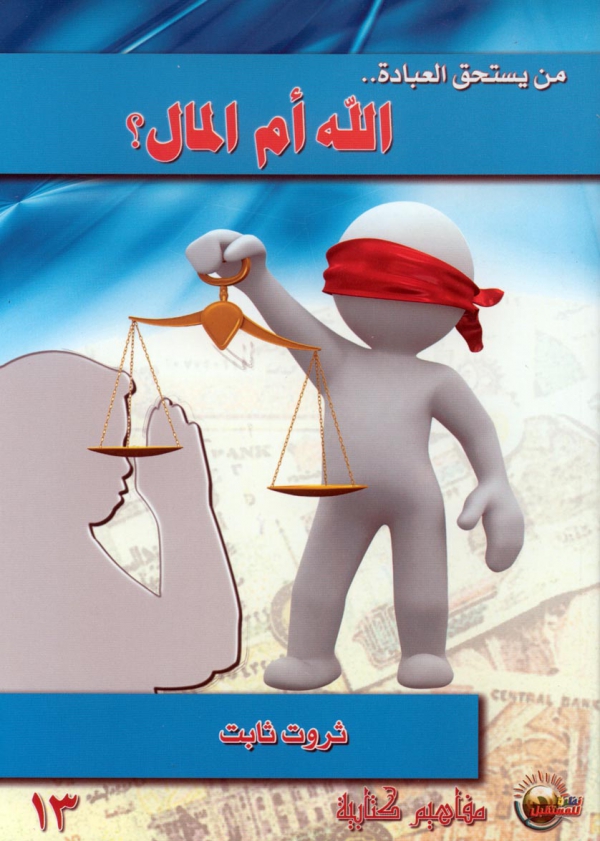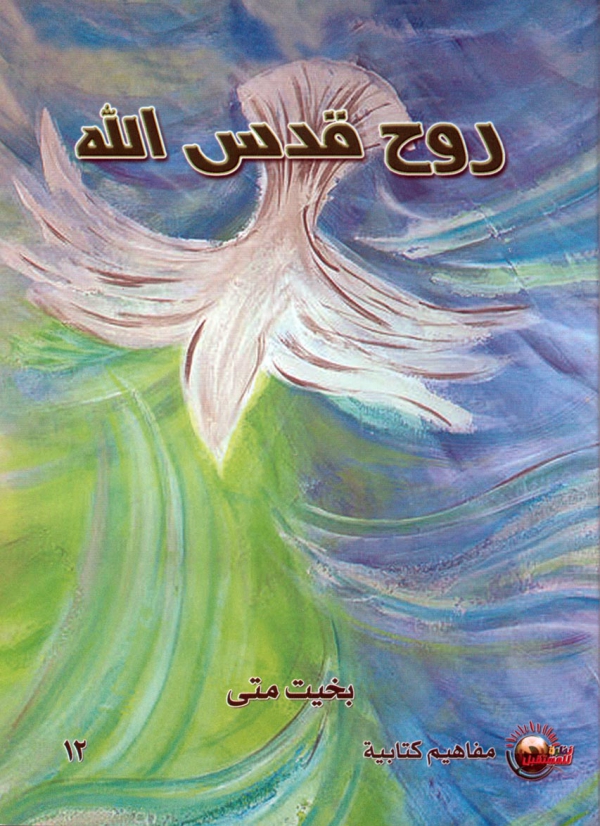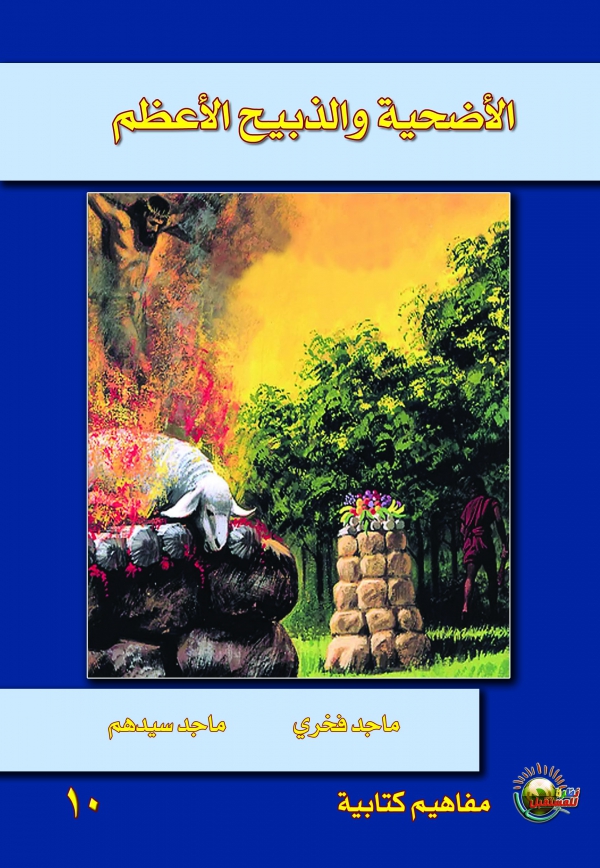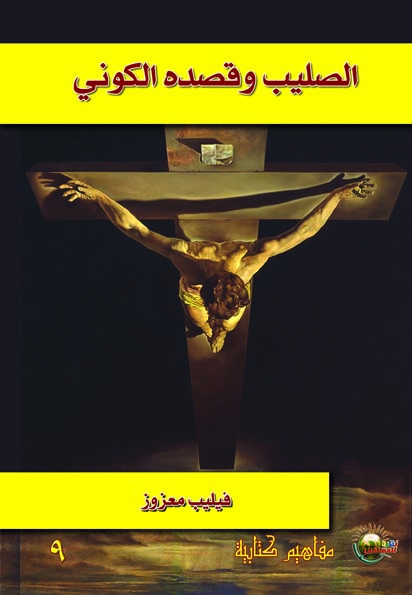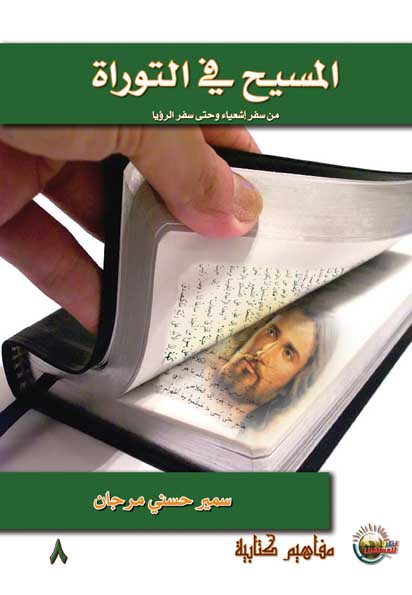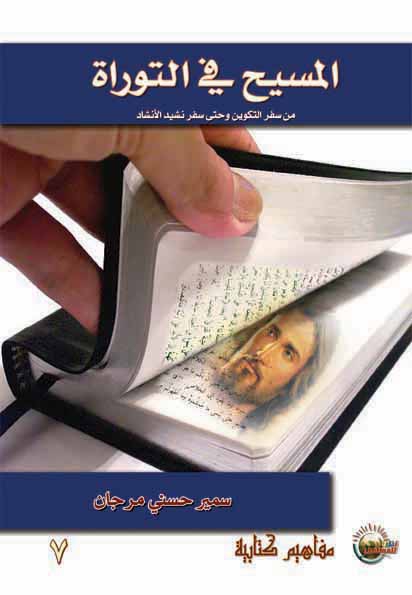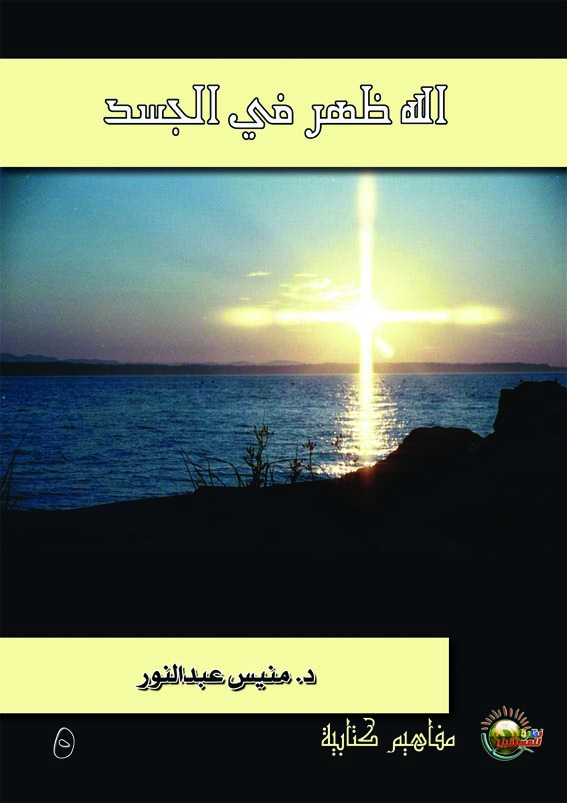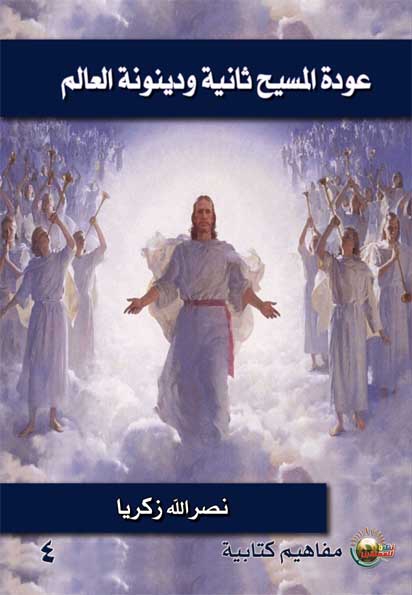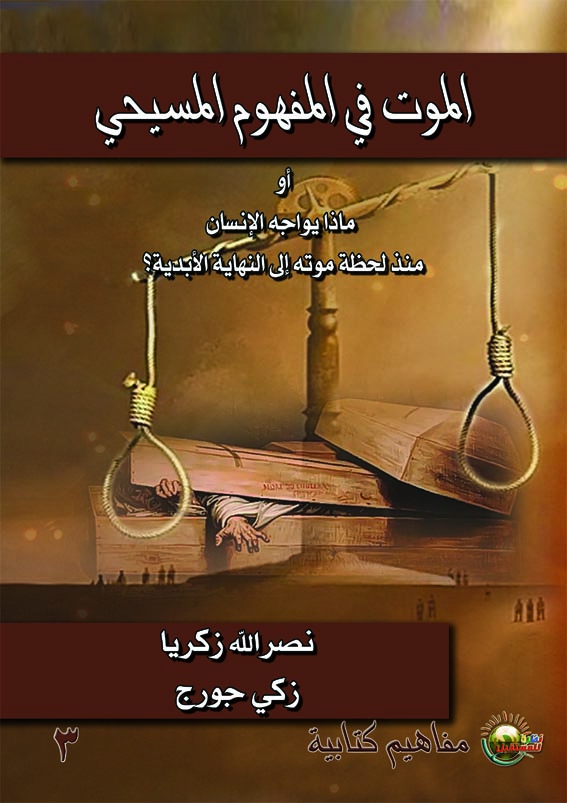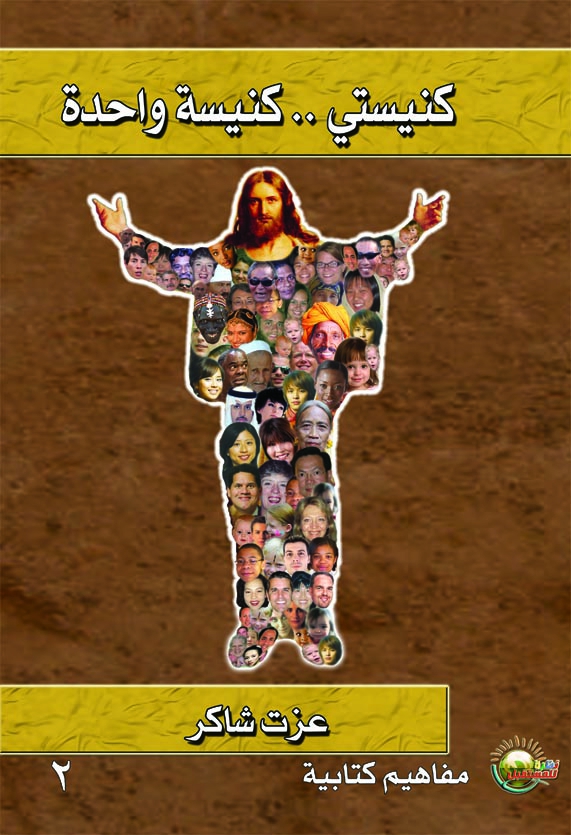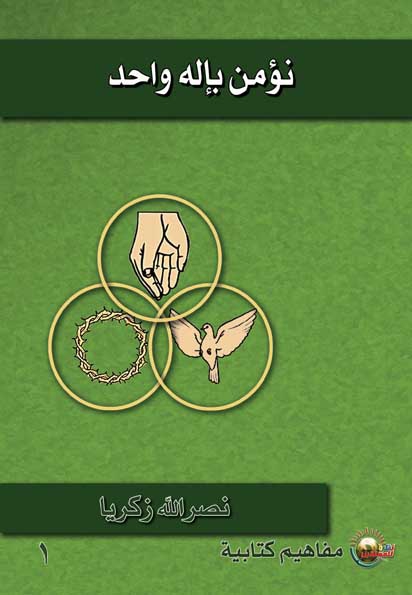Biblical Concepts
There is no doubt that we are all prone to stumbling in our spiritual life due to the wrong concepts of theology which we have formed in our minds. This series is designed to discuss key spiritual concepts in a way that reveals and clarifies biblical truths and is comprehensible to the contemporary Arabic mind.
Jesus' Crucifixion, Burial, and Resurrection: Three Biblical Truths
الكاتب: Dr. Menes Abdel Nour
الناشر: Vision For Future
This brief study focuses on the events of Christ's death that took place at the end of Holy Week. In the introduction, the author expresses his desire that the reader will experience the words of the apostle Paul, "But may it never be that I would boast, except in the cross of our Lord Jesus Christ, through which the world has been crucified to me, and I to the world" (Galatians 6:14).
Christ's crucifixion, burial and resurrection, which took place in Palestine more than twenty centuries ago, are three historical facts. However, a large number of people deny that these facts ever occurred. Strangely they reason that they want to honor and respect Christ: they refuse to accept his humiliation and crucifixion. They said it is unacceptable to think that the whips of wicked executioners tore the body of Christ, who healed the leper, opened the eyes of the blind, fed the hungry, and raised the dead. How can they accept that all of these insults happen to the Christ who did such great miracles? Why did he not do a miracle to stop those who tortured and crucified him, even though he was able to destroy them with the breath of his mouth! How can God allow humans to commit all this evil against a great prophet?
However, those who study the inspired word of God believe the facts of the crucifixion and the resurrection. Firstly, they believe in the revelation of God and trust that God would never allow his revelation to be changed by humans who omit or add to it, because in it God has declared his plan for the redemption of human beings. Secondly, they are assured that the human mind is incapable of fabricating Christ's crucifixion, death, and resurrection. How can one fabricate such a story, and then, supposedly trusting Christ, accept martyrdom and bear all kinds of torture in order to spread "a big lie" which they themselves invented, "believed," and finally spread?!
"Jesus' Crucifixion, Burial and Resurrection" is the eleventh book in the series. It is a medium sized book, 100 pages in length. In it, Rev. Menes tackles these three historical facts in three parts. Part One is entitled, "Christ was Crucified," and is divided into five chapters. Part Two is entitled, "Christ was Buried," and is divided into two chapters. Part Three is entitled, "Christ is Risen," and consists of two chapters.
Part One
Chapter One: Christ foretells his disciples that he will be crucified.
The writer tells the readers that Jesus chose twelve disciples with whom he spent about three years, and during which time he taught them to answer two important questions: first, who is Christ?; and second, what will Christ do? After teaching them the answer to the first question, he asked, "Who do people say that the Son of Man is?" The disciples recognized him as "the Son of the living God," and deduced that he could not die. Only then did Christ begin to teach them the answer of the second question, "What will Christ do?"
Chapter Two: The author details the six trials of Christ.
The soldiers seized Jesus and took him to be tried first before the chief priest Annas. Then, they took him at night to the second trial before the high priest Caiaphas. A third trial occurred in the morning before the Jewish Sanhedrin headed by Caiaphas. Next, the Roman governor Pilate tried him in a fourth trial. Pilate sent him to trial before King Herod in a fifth trial. Finally, King Herod sent Jesus back to Pilate who sentenced Jesus to death in the sixth trial.
Chapter Three: The crucifixion of Christ and its implementation
During the sixth and final trial, the Roman governor, Pilate, hoped the Jews would be unable to prove their complaints against Jesus, giving him the right to declare his innocence. But they kept shouting all the more, saying, "Crucify Him!" He was afraid that the release of Christ might raise the anger of the Jews, and they might complain to Caesar. The Emperor Tiberius had already blamed Pilate for his inability to satisfy the Jews. Thus, the decision was made to crucify Christ.
Chapter Four: People and events around the cross
Rev. Menes writes of the people and events surrounding Christ's crucifixion:
• Pilate's wife asked her husband not to condemn Christ.
• Peter denied Christ.
• Darkness fell over the whole land.
• The earth shook.
• The veil of the temple was torn in two from top to bottom.
• Simon of Cyrene carried Christ's cross.
• The Daughters of Jerusalem wept for Christ.
Chapter Five: Seven last words of Christ on the cross
Christ was crucified in a place known as "Calvary," the meaning of which is "the skull." They gave him wine to drink, mixed with gall; and after tasting it, He was unwilling to drink it (Matthew 27:34). Perhaps, the Roman soldiers, who heard their commander saying that Christ was "righteous," sympathized with Christ and wanted to lighten his pains. Or perhaps otherwise, a Jewish charity association, in which the women had formed committees to ease the pain of the crucified, in order to follow the advice of Solomon in Proverbs 31:6, "Give strong drink to him who is perishing, and wine to him whose life is bitter." They were mixing herbal drugs with the wine. They gave these drugged drinks to people who were about to enter the crucifixion's most difficult degrees of torture. However, when Christ tasted the vinegar, mixed with the drug, he rejected it. Maybe he did not want to lose his concentration, or lose track of his thoughts, and wanted to be alert in order to be able to do what he had come to do. The Bible records seven words of Christ on the Cross.
Jesus spoke the first three of these words in the hours before darkness.
• The first words: Jesus asked forgiveness for those who crucified Him, "Father, forgive them; for they do not know what they are doing." Luke 23:34
• The second words: Christ assured the repentant thief that he would have eternal life, "Truly I say to you, today you shall be with Me in Paradise." Luke 23:43
• The third words: Christ cared for his mother, "Woman, behold, your son!" and then he said to the disciple, "Behold, your mother!" John 19:26
He said the fourth words as the darkness was descending.
The fourth words: "My God, My God, why have You forsaken Me?" Matthew 27:46
He said the last three words of the words in the midst of the darkness.
• The fifth words: "I am thirsty." John 19:28
• The sixth words: "It is finished!" John 19:30
• The seventh words: "Father, into Your hands I commit My spirit." Luke 23:46
Part II
Chapter One: permission to bury Jesus
Christ was most likely crucified on Friday, April 7, AD 30. Rev. Menes says that the shroud and the burial of Christ were proofs of the truth of the Bible's prophecies. Friday was the day when they were preparing to celebrate the Passover. The Jewish leaders did not want the bodies to be left on the crosses on the Sabbath. They asked Pilate to allow them to break the legs of the men who had been crucified. The soldiers came and broke the legs of the two men crucified with Jesus, but they did not break Jesus' legs since they saw that He was already dead. Rev. Menes comments that this is an obvious demonstration proving the fulfillment of Biblical prophecies.
Chapter II: The guard at the tomb provided tight security.
The Jewish elders were afraid that the Disciples of Christ might come and steal his body while the guards were asleep, and claim that he was raised from the dead. They asked Pilate to send soldiers to make the tomb secure. Rev. Menes raises many questions. If all the guards were asleep, how did they know that the disciples of Christ were the ones who stole his body? If all or even some of them were awake, why did they not prevent the theft, or why did they not arrest the thieves? It was difficult to believe that all the guards were asleep at the same time or that the frightened disciples tried to steal the body of their teacher from the tomb when there was such a great stone in the way, stamped by the governor, and secured by guards. How could they remove that stone without waking the guards? Despite all these impossibilities, the elders of the Jews lied and exploited their religious authority to spread false rumors and convince the people. Unfortunately, to this day, many still believe the lie they created that day!
Part III
Chapter One: Divine encouragement and commission
The writer points to feelings that were quite different from the feelings of the guards, and which contradicted the ideas of the Jewish elders. The hearts of the women believers were filled with surprise and joy. A number of Jesus' disciples were gathered together when they heard his divine advice and encouragement. They did not imagine them because they were divine gifts.
Chapter Two: The apparitions of risen Christ to the believers
Christ manifested Himself to the believers ten times after his resurrection. He appeared five times in or near Jerusalem on Resurrection Sunday. The other five times occurred during the forty days before he ascended to heaven.
The five apparitions that took place on Resurrection Sunday included the following:
• Jesus manifested Himself to Mary Magdalene alone.
• He appeared to the women while they were returning from the tomb.
• Jesus manifested Himself to Peter alone.
• He appeared to two disciples on the way to Emmaus.
• Jesus manifested Himself to the disciples in the absence of Thomas.
The five later apparitions were when:
• Jesus manifested Himself to the disciples in Jerusalem in the presence of Thomas.
• Jesus manifested Himself to seven disciples at the Sea of Tiberias.
• He appeared to the disciples and five hundred brethren on the mountains of Galilee.
• He appeared to Jacob.
• He appeared to the disciples before He ascended to heaven.
